Last week we discussed our 3D printed NEM coupling design, if you missed it you can find it here:
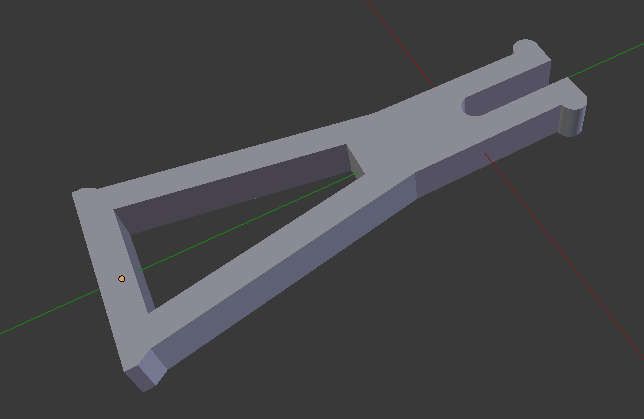
This week we are looking at adding magnets to the coupling design. Why magnets? Well credit needs to go to Mike Buick (British Railway Modelling Facebook group), as shortly after we wrapped up the Eurostar coupling project and were looking at NEM couplings, he posted some photos around mid-October 2019 about his magnetic couplings, including this one...
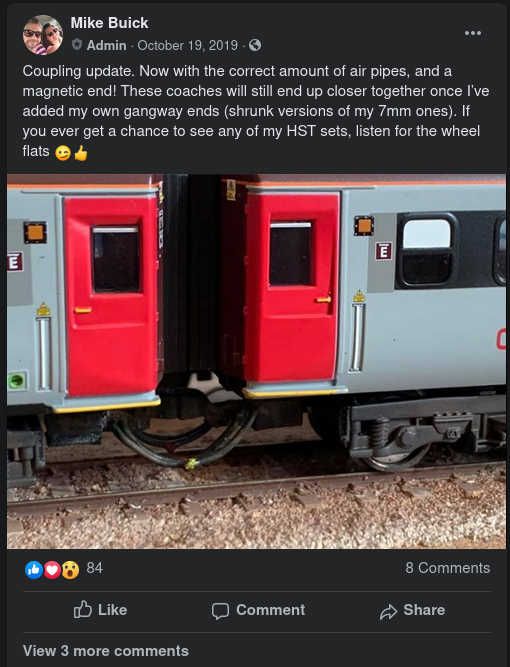
Mike's series of posts inspired me to order some magnets off Amazon, which is what I did...
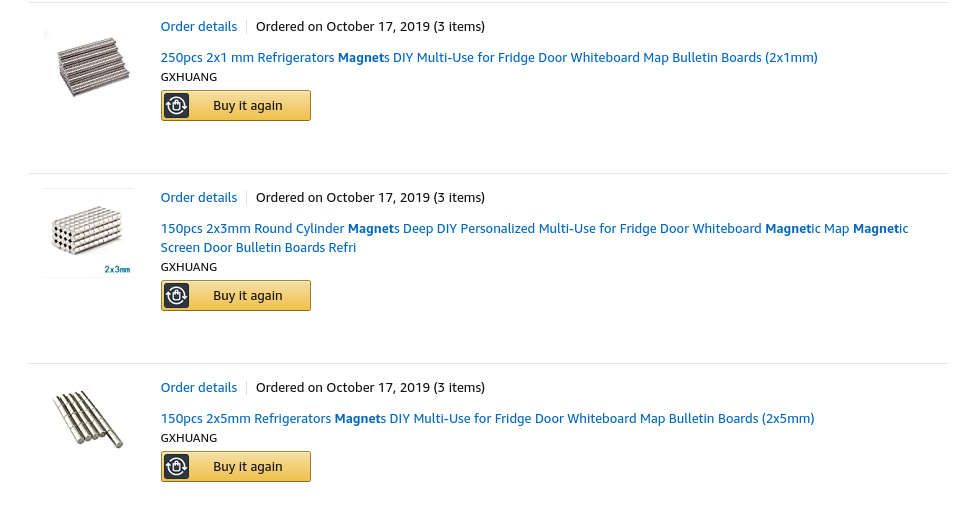
So if you find this article useful, you might consider donating to Mike's fundraiser for Meningitis Research, as without Mike's inspiration posts and floating the initial idea of magnetic couplings, long before they were a "thing", I probably wouldn't have even thought of going down this route. However I'm very glad I did..

So why magnets? Well aside from the very satisfactory coupling noise the magnets make, they make coupling and uncoupling very smooth and simple, with the right design you can achieve close coupling and automatic decoupling.
Is it complex? Not at all, its very basic primary school science. I'm sure you probably remember all that North and South poles, and how opposite poles attract, while like poles repel?
If you are ever wondering if you will ever use the stuff you learnt at school, whether its primary school science, secondary school Physics or advanced Physics at University, I finally found a use for it :)
So in this article we will look at...
- Magnetic Coupling configurations
- Coupling Strength
- Magnetic Fields and Electronics
- Automatic uncoupling
- What magnets are we using
Magnetic Coupling configurations
There are two types of magnetic coupling configuration:
- Opposite poles (N <-> S)
- Dual opposite poles (N/S <-> S/N)
Opposite Pole Couplings
Opposite poles works on the principal that opposite poles attract. This type of coupling will work with any shape of magnet - round, cubed, cylinder, stepped etc. You have one "north" coupling with the north pole facing outwards, and you have one "south" coupling with the south pole facing outwards. When these point at each other they connect as the magnets join together.
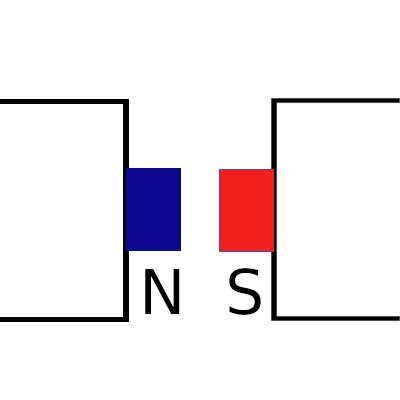
These work really well as you are maximizing the available magnet strength, the only downside is that you can only connect a north pole coupling to a south pole coupling. So you need to place a north pole coupling on one end, and south pole coupling on the other end of all your rolling stock. This is fine, but it makes things like shunting or station piloting difficult because you have to make sure the locomotive coupling is the opposite to the end of the rolling stock coupling you are trying to attach to. This will make some configurations not possible when it would have been possible with a normal coupling.
Dual Opposite Poles
Dual opposite pole couplings have a pair of opposing poles arranged side by side. For example, with a North pole on the left and a South pole on the right, this will always result in opposing poles facing each other because of the way the couplings are arranged. This eliminates the need for different polarity couplings, instead you have one design of coupling that has both North and South polarity. When you turn the coupling around to put it in the other end of the rolling stock, the poles are facing the opposite way. This essentially creates a coupling without polarity.
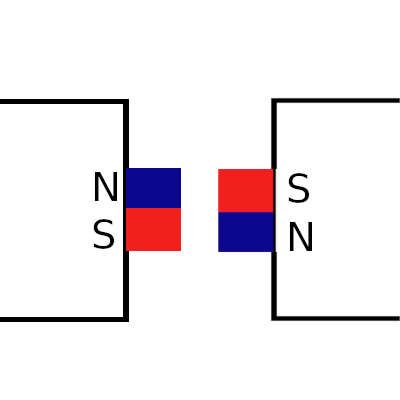
Provided the magnets are arranged side by side (not top/bottom), and the couplings are all made identically the same (eg. North pole always on the left, south pole always on the right), then when you have the magnetic coupling on one end the north pole is on the right, but when you flip the coupling around to go on the opposite end of the rolling stock the north pole is on the left. So it will always line up so opposing poles are facing each other. This works because of the way the train couplings are orientated.
You could easily have the north pole on the right, and the south pole on the left, the trick is to remain uniform across all your magnetic couplings.
There are two ways to achieve dual opposing pole coupling configurations:
- Use two magnets of equal strength, slightly spaced
- Use a cube or cylinderical magnet turned sideways
Using multiple magnets can be done in a number of configurations, you could use two magnets (north/south), you could use four magnets etc. As long as the magnets line up with opposing poles it will work. So a configuration of N-S-N-S will flip to S-N-S-N.
What won't work is arranging magnets above/below, as when its flipped to the other end of the rolling stock, the north magnet will still be facing the north magnet as its still on the top.
Using a single magnet is also possible with cylinderical or cube magnets. The magnet surface that is facing outwards towards the connecting coupling has to have the magnetic field arranged N-S or S-N. This is achieved by turning the magnet sideways, so the left hand side of the magnet is one pole, and the right hand side of the magnet is the opposite pole. You are basically mimicing two magnets with opposing poles. This works because when you cut a magnet in half, you don't end up with a North pole magnet and a south pole magnet, you end up with two smaller magnets with a north and a south pole. This approach works by leveraging the characteristics of a magnetic field.
Cube or cylinderical magnets will work best if you are trying to use a single magnet to achieve dual opposing pole couplings. If you are using two magnets, you may have better luck with smaller round magnets.
The advantage of dual opposing pole couplings is that you don't need to worry about polarity. With dual opposing pole couplings, polarity isn't an issue because you are connecting a north to a south pole, and south to a north pole side by side. The disadvantage to dual opposing pole couplings is that if the magnetic field strength is slightly biased towards one pole or another, your coupling might not smoothly connect. The magnetic field strength maybe slightly weaker than had you connected the magnets dead-on with opposite poles. You can counteract this by using slightly stronger magnets.
Coupling Strength
The strength of the coupling is very important. If the coupling is too weak, when your train pulls away, the coupling will break loose. If the magnetic field is too weak, when you pull longer and heavier loads, the couplings can break loose. They might not break loose right away but at an inconvenient time, such as going around a curve or up an incline. The magnetic field strength is also important because it can have a counter-acting force on the movement of bogies, perhaps just enough to cause a derailment.
Factors that impact the strength of the coupling include:
- Strength of the magnet
- Size of the magnet
- Size of the surface area connecting the magnets
- Weight of the rolling stock
- Weight / Number of rolling stock coupled
The design of the coupling and the characteristics of the magnet will have a massive impact on the performance of the coupling. A simple straight arm dead-on coupling may offer maximum surface area but might not provide the flexibility needed to negotiate some curves, resulting in a derailment.
We've found through testing that you want the magnet to be strong enough to behave like a normal coupling but not too strong that it prevents automatic decoupling.
Magnetic Fields and Electronics
Neodymium magnets are very strong rare earth magnets. They have very powerful attraction forces, so you have to be careful when handling but you also need to be careful about their impact on electronics and magnetic media.
When attaching a coupling with a neodymium magnet to a locomotive, you should be careful to make sure the magnetic field isn't interfering with the operation of the motor. The DC motor that is in your DC or DCC powered locomotive works using magnetic fields. If the coupling is close to the motor and the field is large enough, such as with an N42 or N52 magnet, you could impact the running characteristics of your motor, potentially shortening its life.
Layouts have a lot of sensitive electronic equipment, from off the shelf solutions such as DCC Concept Cobalt products to expensive decoders and controllers like the z21 or ECOS. You should be careful with magnetic couplings, too strong a magnetic field and perhaps accidently leaving your magnet couplings in close proximity to sensitive electronics could cause them to malfunction or fail.
This is why its important to factor in "just enough" magnet to function as a coupling, but not "too much" magnet that you magnetize your expensive HST chassis!
Automatic Uncoupling
One of the requirements we had for our couplings were to make sure they were just as good as stock couplings, this means making sure you can automatically uncouple them.
Stock tension lock couplings can be automatically decoupled by slowly running them over a uncoupler, which is a small spring loaded piece of plastic that touches the part of the coupling that hangs down, causing it to move the tension lock upwards, disengaging it, so the side of the train that is powered moves away leaving the other section behind.
Some systems work by using a wand, which basically does something similar.
For magnetic couplings, there are two options:
- Electromagnet
- Static magnet
An electromagnet is a device that generates a magnetic field when powered, the strength of the field can be adjusted by the amount of power fed into the electromagnet. The electromagnet approach could be used to attract or "hold back" one of the couplings, while the opposite side pulls away. Provided the electromagnet applies slightly more force than the coupling, the coupling will disconnect and the train will move away.
The same approach could be taken with a static magnet, the static magnet could be a bar magnet placed under the track or under the baseboard, orientated with a north or south pole facing towards the track. When the train is moved slowly over it, one side of the coupling will be pulled while the other side of the coupling would be repelled, in theory disconnecting the two couplings from each other. This approach however would require making sure the couplings were opposing poles, with one of the poles on the bottom of the coupling.
With either of these approaches, you wouldn't be able to use dual opposing pole couplings, as you'd likely derail the locomotive as both couplings have both poles. So initially it looks like you wouldn't be able to have automated uncoupling and polarity-neutral coupling (that you get with dual opposing pole couplings).
To make things work with dual opposing pole couplings, you would need to use two electromagnets, or possibly two static bar magnets. You would have to place a north pole on one side of the track and south pole on the opposite side of the track, these would need to align with the left/right pole alignment, and possibly offset slight (few mm). When the train passes through the uncoupler, you would need to apply a sufficient field so the magnetic field influences the coupling magnet of the trailing piece of rolling stock but not sufficient enough to influence the other pole on the same coupling. If you do this, you'll be able to generate the same pull / holding back force on the coupling that we mentioned above for single pole couplings. Basically the magnets on each side of the track hold back the opposing pole, while repelling the pole on the opposing coupling. If the force is too much, you will likely derail the train, so you will need to balance this out quite carefully, which is why an electromagnet is probably the best approach.
This goes back to making the magnetic force on the couples just "right", if its too strong, automatic uncoupling becomes very challenging, if its too weak, you'll uncouple going up an incline.
What magnets are we using?
The type of magnet depends on the application, we found that it wasn't necessary to use very strong neodymium magnets, in fact we found that magnets that were too strong made it next to impossible to automatically uncouple without derailing the train.
For freight rolling stock, such as plank wagons, conflats and other two-axle freight, that a 2mm (d) x 3mm (h) magnet worked well in both horizontal and vertical positions. We found that this type of magnet wasn't strong enough and didn't provide enough surface area for pulling coaching stock. We used a 3mm (d) x 4mm (h) magnet for coaching stock on our initial designs, that has worked well with Mk1, Mk2, Mk3 and Mk4 rolling stock. It also has worked well with locomotives.
For dual-opposing poles (or no-polarity couplings), we are using cylinder (3mm x 4mm) and cube (N42 2-3mm) magnets.
Next Article...
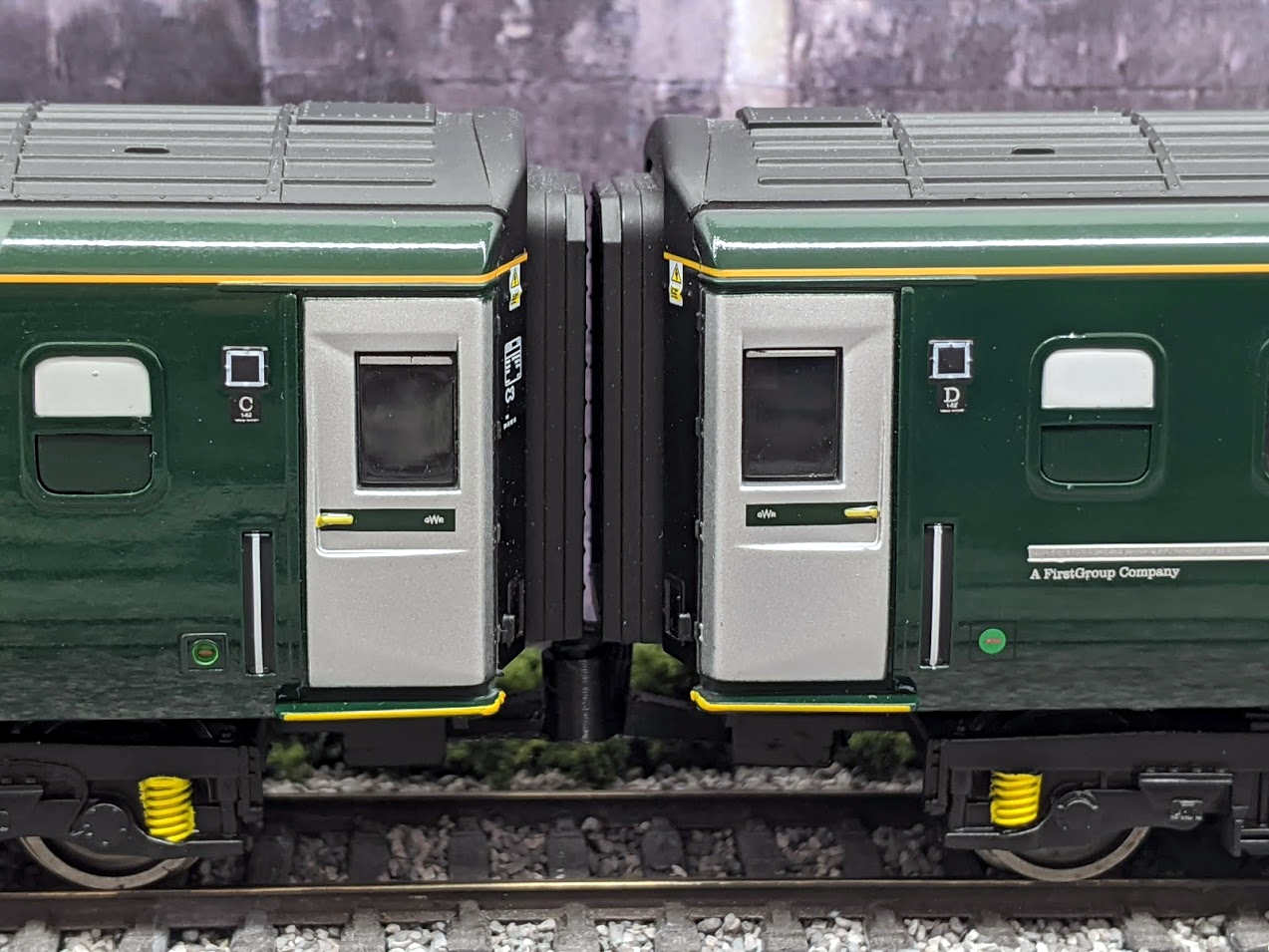

Comments